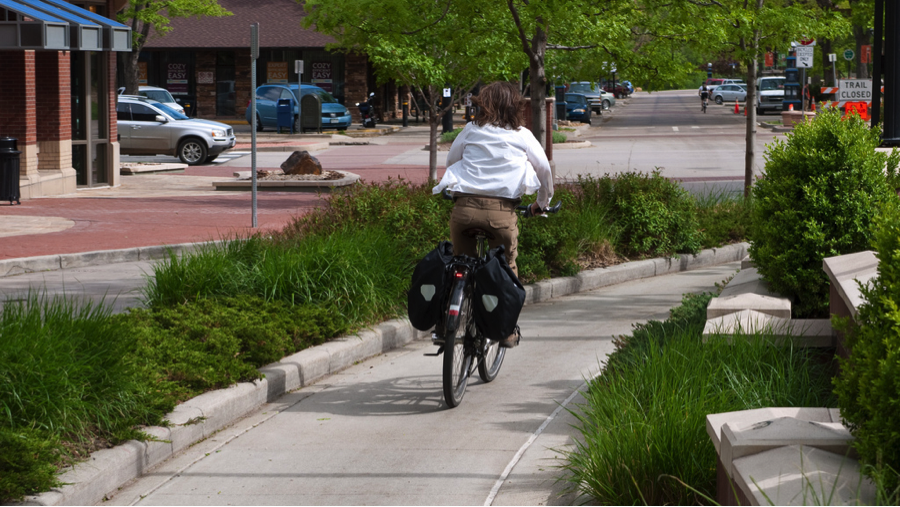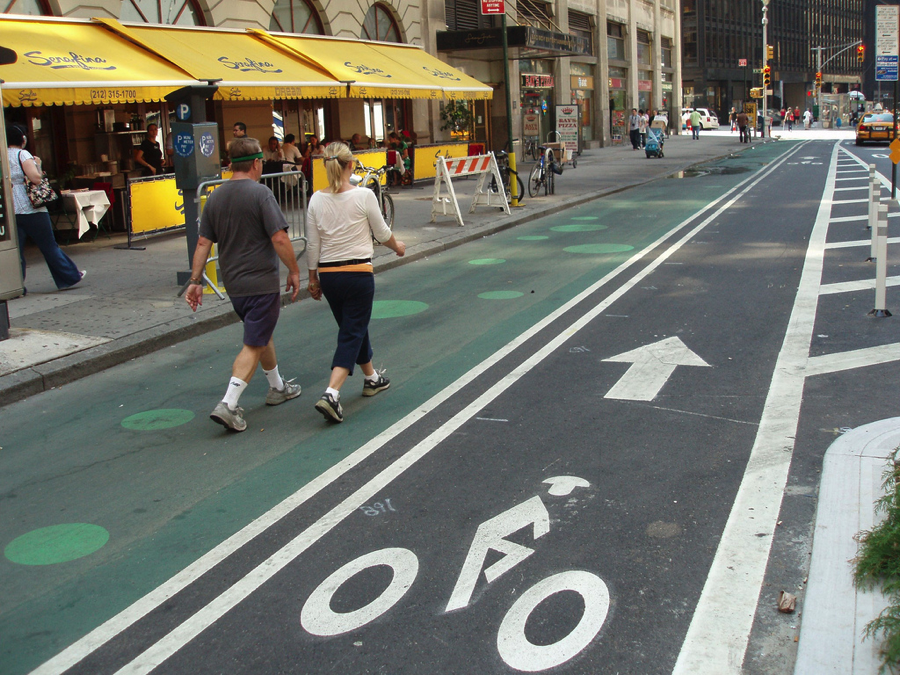
Three critical considerations for evaluating AASHTO’s new Bikeway Guide
As a valued T4A member, we are dedicated to providing you timely updates on transportation topics.
On July 25th, The American Association of State Highway and Transportation Officials (AASHTO) met to consider changes to their Bikeway Guide, including the long-awaited addition of designs for protected bike lanes.
AASHTO deserves credit for creating and updating this guide for building bike infrastructure, but AASHTO is largely responding to the massive, growing interest from cities across the country. Many cities have been the leaders in this area. San Jose, CA, and Champaign, IL, have had protected bike lanes since the 1970s, and Boulder, CO, and Denton, TX, since the 1980s. People for Bikes started the GreenLane project in 2011 to help more cities build protected bike lanes. The result is that — without any formal guidance from AASHTO — almost 300 protected bike lanes exist across the country today.
It is important to recognize the limitations of AASHTO’s action and why it’s ultimately unlikely to lead to the significant expansion of new bike and pedestrian infrastructure onto more roadways across the country. Why? Here are three reasons.
First: AASHTO’s Guide for the Development of Bicycle Facilities is wholly separate from their standard manual for road design, the Policy on Geometric Design of Highways and Streets, also known as “The Green Book”. Unlike this new bike guide, The Green Book is the industry standard that sits on every transportation engineer’s desk.
Second: The Federal Highways Administration adopts The Green Book by federal regulation. Not so for the Bikeway Guide. This reinforces the message to engineers and local policymakers that one document has primacy over the other.
Third: These two documents are not written in conjunction. This often sends designers in different directions.
A local transportation agency interested in building bike facilities might seek out the AASHTO’s Bikeway Guide for assistance. If they do, they will be steered to some very interesting designs, but not the most cutting edge designs being deployed in many cities. For a more up-to-date approach, communities turn to the National Association of City Transportation Official’s (NACTO) Urban Bikeway Design Guide. NACTO’s authors have analyzed designs across the world, and worked with local governments more likely to build bike infrastructure.
While the AASHTO Bikeway Guide might help design bike infrastructure, the overall guidance in their flagship guide, The Green Book, pushes engineers toward roadway designs that make bike infrastructure difficult at best. The Green Book encourages wide lanes and wide roads with fast-moving traffic, which makes additional right-of-way for bicycles unlikely and creates a hostile environment for those outside of a car.
When these shortcomings in The Green Book are pointed out, many say it allows for flexibility (like this page from the Federal Highways Administration about context sensitive solutions). I work with state DOTs to analyze the barriers in their project development processes that stand in the way of building complete streets (roadways that safely accommodate all users from trucks and cars to transit users and people on foot or bike). In my experience, it’s a persistent challenge for transportation agencies to exercise flexibility that’s theoretical.
To use that flexibility, a project designer must first make up their own design without guidance from The Green Book, then undergo a challenging and strict review process for approval. For engineers judged on delivering a project quickly, this flexibility is really a Hobson’s choice.
I am excited to see AASHTO recognize the need for guidance in bike infrastructure design and support separated bike lanes, which are essential for making biking safe, convenient and attractive for far more people. Protected bike lanes appeal to seven times more people than unprotected bike lanes, according to People for Bikes. But, for AASHTO to demonstrate true enthusiasm for bike infrastructure and become a partner in building safer roads for non-motorized travelers, the organization needs to bring these designs and concerns into its flagship document, The Green Book.





